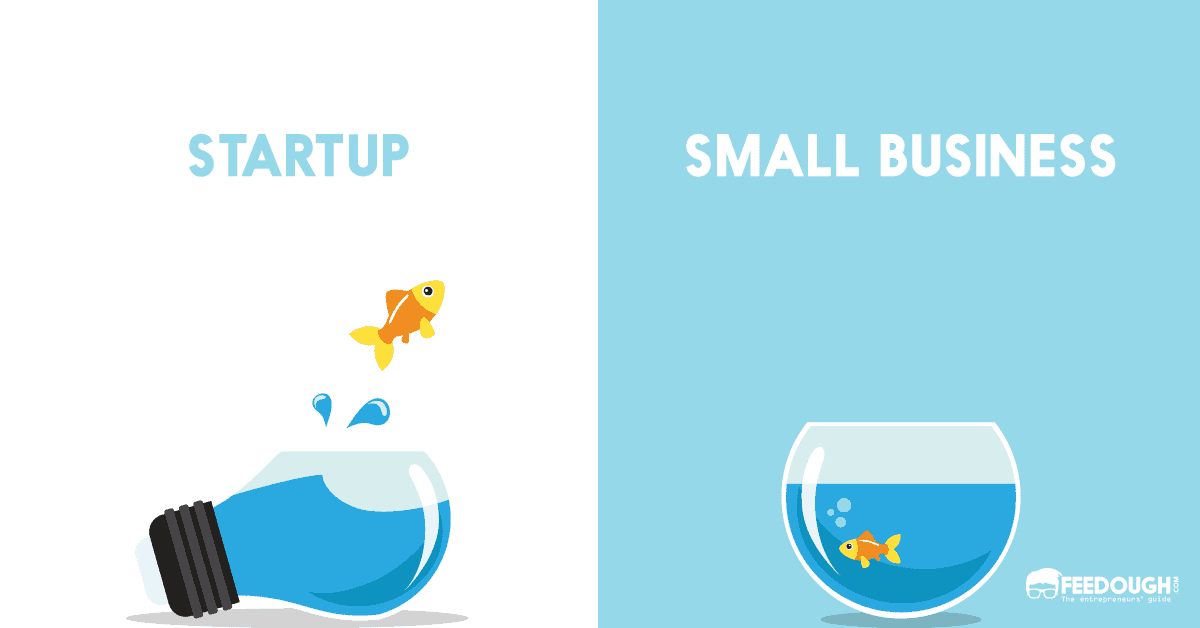If you’re an entrepreneur, there must be a lot of days when you thought of how you can make your startup to grow and spread like wildfire. How to build product, distribution, and marketing strategies which put the growth on automation?
While there is no rule of thumb to help you in this venture, there surely is a clever technique – Growth Hacking.
While many of you might have heard the term, not many would know what growth hacking exactly is. Here’s a comprehensive guide to help you understand everything you should know about the same.
What Is Growth Hacking?
Growth hacking is a marketing strategy in which rapid experimentation is carried out across various business areas, such as marketing, product development, and sales segments, to identify the most effective and efficient ways to do business.
The term “Growth Hacking” was coined in 2010 by Sean Ellis, founder and CEO of GrowthHackers who has helped numerous internet companies achieve incredible growth using strategies which were not as broadly focused as traditional marketing.
The goal of growth hacking strategies is simple: massive growth in a short time.
This technique is more common among startups where entrepreneurs strive for rapid growth without spending huge amounts of cash post the launch of their product/service. It can also be used to grow and maintain an already established active user base. The target of growth hacking can either be long term sustainability or low cost per customer acquisition.
Now, it is likely one might confuse between growth hacking and traditional marketing. But there are some important factors that make them different from each other.
Growth Hacking vs. Traditional Marketing
Even though the fundamental principles (increased engagement, conversion and retention) are the same for both growth hacking and traditional marketing, they differ when it comes to their goals.
Growth hacking is mostly associated with startups and scaleups; it is mostly comprised of strategies that do not require a huge amount of money like how established businesses might. In addition, marketing requires extensive market research to be done before deciding on the platform or channel to market a product/service. Growth hacking, on the other hand, uses analytical and website data to understand the requirements of the market and implement strategies.
A marketer can be a growth hacker if he focuses his attention on the growth of the business alone but not vice versa.
Who is a Growth Hacker?
A growth hacker is someone whose profession is growth hacking. From the words of Sean Ellis –
A growth hacker is a person whose true north is growth. Everything they do is scrutinized by its potential impact on scalable growth…
An effective growth hacker also needs to be disciplined to follow a growth hacking process of prioritizing ideas (their own and others in the company), testing the ideas, and being analytical enough to know which tested growth drivers to keep and which ones to cut. The faster this process can be repeated, the more likely they’ll find scalable, repeatable ways to grow the business.
It can be inferred from these words that growth hacking is closely linked to A/B Testing and optimization. The strategy, however, is executed in four phases to get the perfect solution.
Phases Of Growth Hacking
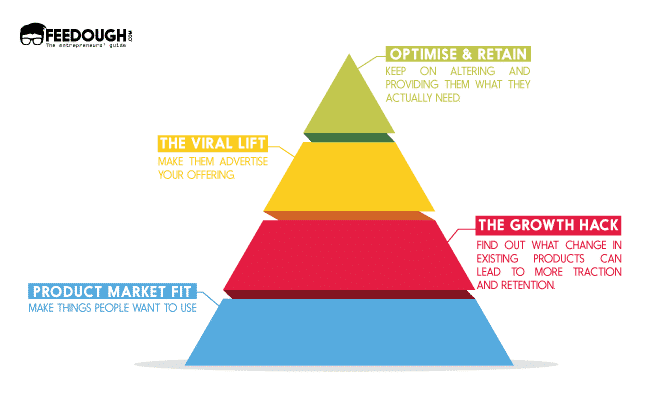
What made Whatsapp the top IM app for smartphones? What made Facebook get to the top and retain its position? We surely talk about it a lot. But here’s how growth hacking actually works.
Product-Market Fit
Make things people want.
Growth hacking focuses on understanding the users and building products that they actually need and would love to use. It is not always limited to disruption. Sometimes, a simple change to the existing products can make the product more fit than the ones available in the market.
According to Sean Ellis, your product has a good product-market fit if at least 40% of your users say that they would be very disappointed without your product.
I’ve tried to make the concept less abstract by offering a specific metric for determining product/market fit. I ask existing users of a product how they would feel if they could no longer use the product. In my experience, achieving product/market fit requires at least 40% of users saying they would be “very disappointed” without your product. Admittedly this threshold is a bit arbitrary, but I defined it after comparing results across nearly 100 startups. Those that struggle for traction are always under 40%, while most that gain strong traction exceed 40%.
The strategy focuses on building products and services that are easy to market (where viral marketing and word of mouth marketing works). These products are results of extensive research of what the customer actually needs, wants, and desires, and are continuously upgraded and altered to remain a good market fit. Some examples of such products are – Whatsapp, Google Drive, Buffer, etc.
The Growth Hack
Find out what change in existing products can lead to more traction and retention.
Growth hacking involves hacking the existing system to look for potential vulnerabilities and opportunities. It involves researching what’s missing in the existing products that could actually result in more traction and retention. For Candy Crush, it was Facebook integration, limited lives, and Facebook invites to get those lives back. For Hubspot, it was content marketing and free products.
The Viral Lift
Make them advertise your offering.
The essence of growth hacking is making your existing customers attract more customers for your business. Hotmail was able to get over 1 million new users within 6 months just because the company added “PS I Love You. Get Free Email” at the footer of every email. Candy Crush’s growth hacking strategy involved sending Facebook invites to get more lives. Similarly, Dropbox provided extra storage by inviting friends to use the service.
The viral lift originates from sowing a sharing strategy to the core of the business model. This strategy is drafted in a way that customers benefit every time they share the offering with others.
Optimise & Retain
Keep on altering and providing them what they actually need.
This is one of the most crucial and difficult tasks of growth hacking. Once you have customers using your product, it’s time to get serious about the metrics. Check the metrics to analyze whether your customers are actually returning or not returning to use your product, interview them to understand why they don’t come back, and use the data to improve your product.
Compared to traditional marketing strategies, growth hacking does not just focus on pitching the idea. It focuses on altering the idea occasionally to suit the customers’ needs. It involves using many factors to identify the most efficient way to conduct business. These are –
Key Performance Indicators (KPI)
Just like Facebook uses the number of monthly active users as a KPI, WhatsApp uses the number of messages sent per day, and Uber uses the number of rides as the KPI, your business should have a KPI, too. Identifying this is very important to begin the growth hacking process.
Channels
A growth hacker has a number of channels to choose from: SEO, SEM, Social Media, PR, Sales, Viral Marketing, Business development strategies, etc. acquire a good overview of all the channels and how they can be used for your business.
Every business industry is different, their targets may differ and so identifying a channel that can carry your message to the world is the key here. This is not an easy task but with research about the company, ongoing competition and testing, you can find out and prioritize the channels.
A/B Testing
A/B Testing is a method that simultaneously experiments two or more pages to see which one yields the best results. The channels you feel are necessary should undergo A/B testing so that the best one can ultimately be used for growth hacking purposes.
For instance, if a social media platform is taken up for testing, then you will have to post different posts with different hashtags, post at different times, etc, to find out what works the best.
Data Analytics
Data analysis is very important for the successful implementation of growth hacking. Without it, growth hacking is next to impossible. Track all the actions that you are doing for the company. Only by tracking can you understand where and what needs improvisation.
There are many ways to track your tests or actions. When PR is concerned, the number of reviews on your post and the number of answers posted by journalists/bloggers should tell you about it.
User Feedback
Every business spends a lot of money on consultants but nobody other than the customers are sure to know everything about the product. They use it every day, so they have the answers to where you should improve and what.
Thus, negative reviews or comments are very important to understand where your product needs to be improved. Testing products with customers can provide more information than a consultant ever will.
Prioritization
After analysing your data and channels, A/B Testing should be done again. Always remember that continuous testing is crucial for your success. Prioritize the best channel and then start testing again.
Automation
When you have improved your product and prioritized your channels, it is time to automate the growth hacking process and your strategies and tactics. For this, you can use various growth hacking tools.
IFTTT is an example of a classic growth hacking tool. When you post a picture in Facebook, it can be posted to Instagram and Twitter in a few seconds with IFTTT. It can also help track the progressions of a link email across various platforms.
Growth Hacking Strategies
One you have paved the way to growth hacking, it is time to implement growth hacking strategies. Here are a few growth hacks your company might benefit from:
- Product Listing Platforms – Product Hunt is a platform where you can expose your startup to a global audience. This platform can also help you receive feedback and ideas from innovators, journalists, etc.
- Referral Hack – introduce referral hacks to your business where a customer who refers your product/service to a friend gets a fair benefit. This strategy can improve your user base dramatically.
- Customer Loyalty Programs – The cost of retaining a customer is six to seven times lower than acquiring new customers. Find ways to reward loyal customers as a bird in hand is always better.
- Host and attend community Events – attending community events can help you make bigger and better connections. Exposing your startup will help you gain success when you can learn more about your industry, get inspired and make important connections.
- Social Media – Social media can be used to promote yourself, receive feedback, interact with customers and influencers.
- Content Marketing – Create a content marketing strategy, preferably a video with a modest budget. Videos can convey a lot of information in a small package and without getting people bored. An interesting video can get viral, thus, improving your user base.
- Get help from Influencers – Well known influencers (people with more than 50,000 followers) can help your product/service reach a wider audience. If done the right way, influencer marketing can help you achieve a massive reach.
- Scarcity Principle – customers are more likely to buy a product or take a deal when there is a sense of urgency. Limited edition deals or countdown timers can drive your customers to purchase more than regular products.
Benefits of Growth Hacking
According to Sean Ellis –
A growth hacker is a person whose true north is growth. Everything they do is scrutinized by its potential impact on scalable growth.
Having a person solely focussed on the growth of your company is in itself a benefit in addition to:
- Low cost – growth hacking is designed to use only the resources you already have in the most economical way. Even though the testing processes take a long time before you find the right hack, you are still using way less money than if you were to use advertising or traditional marketing strategies.
- Assured Return on Investment (ROI) – With the data telling you about every action’s consequences, you can discard the methods that do not help you much and keep the hacks that promise your business success.
- Low resources – unlike traditional marketing, growth hacking doesn’t require hefty resources to give big results. All it needs is someone who knows how to analyze data for the best results.
Examples Of Growth Hacking
There are a few well-known examples where growth hacking was implemented successfully.
Dropbox
Dropbox saw a 60% increase in the number of signups when it offered its users 500MB additional storage for free whenever they referred someone to Dropbox. The person being referred also gets additional space giving them a reason to prefer using that link rather than signing up on their own.
They also offered extra storage space when the user shared Dropbox via social media. Here, each new user cost Dropbox only 500 MB of disk storage space and no advertising costs. Moreover, as each user’s storage space increased, it became less likely that they would give it up and go to some other platform.
Hotmail
Hotmail found traditional advertising methods to be too expensive and came up with an ingenious hack. One of their investors suggested putting “PS I love you. Get your free E-mail at Hotmail” at the bottom of every e-mail sent with Hotmail.
Soon after the company incorporated this strategy, it acquired 3,000 signups per day and went on to a staggering 1 million users in 6 months. They used every single mail of every single user as an advertisement.
This was actually one of the growth hacks that was implemented long before the term was coined. Today though, this is a common practice and you can find it when you send an email from iPhone (Sent from my iPhone).
The founders of Instagram made their move when the digital camera on smartphones was still a new trend, and there was no good social photo-sharing application. The company created a new experience for the users by adding filters and social networking elements to a photo-sharing platform.
The users loved the way they could showcase their lives and experiences to a larger audience and, hence, were eager to spread the word themselves. The company also used influencer marketing and asked journalists and tech influencers to write reviews about the same. These reviews also resulted in a huge boost to the
Airbnb
Airbnb hosted roughly 400 guests during its initial year and now roughly 400 guests check in every 2 minutes into an Airbnb! Growth hacking played a huge role in helping them reach this level.
Out of the several hacks they implemented, their craigslist hack was the most famous. They managed to reverse engineer an API (Application Programming Interface) that allowed Airbnb users to cross-post their listings on Craigslist. Airbnb’s growth rate increased dramatically as Craigslist already had a huge user base.
Even though Craigslist shut them out, it had already worked its magic. Following the hack, they grew exponentially.
LinkedIn grew from 2 million users to 200 million users only in a few years because of a great growth hacking technique.
LinkedIn enabled users to create public profiles which came up in Google’s search results. Being a working-class individual, you could get yourself listed on the first page of Google through LinkedIn without paying for it.
This is one of the major reasons people sign up for LinkedIn.
The above examples are for drawing inspiration from them. What worked for one company might not work for another. Each startup or business will have a different way to grow and, thus, an unlimited number of hacks. Therefore, identifying, prioritizing and testing hacks until you find the right fit will help you reach your business to great heights.
Started off as a pilot but took the road of entrepreneurship. Ask me anything about the changing trends and the startup ecosystem.

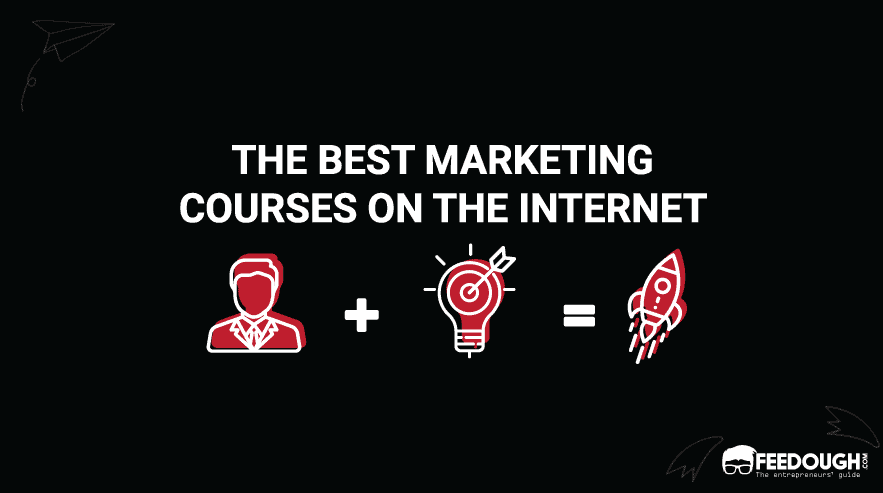
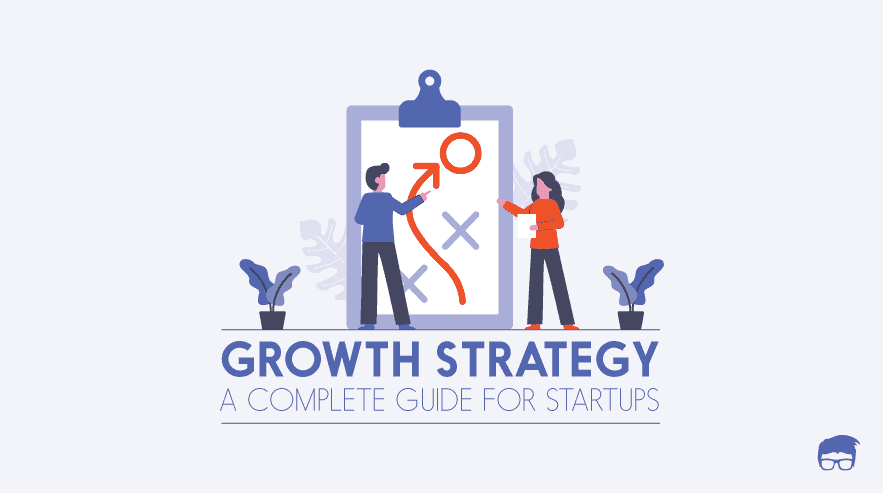
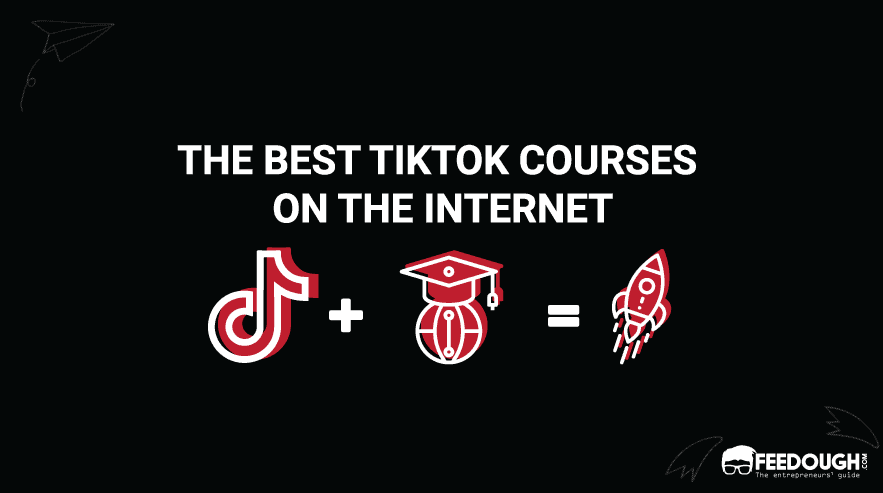


![How To Get Startup Funding [The Complete Guide] startup funding guide](https://www.feedough.com/wp-content/uploads/2022/08/startup-funding-guide.webp)
